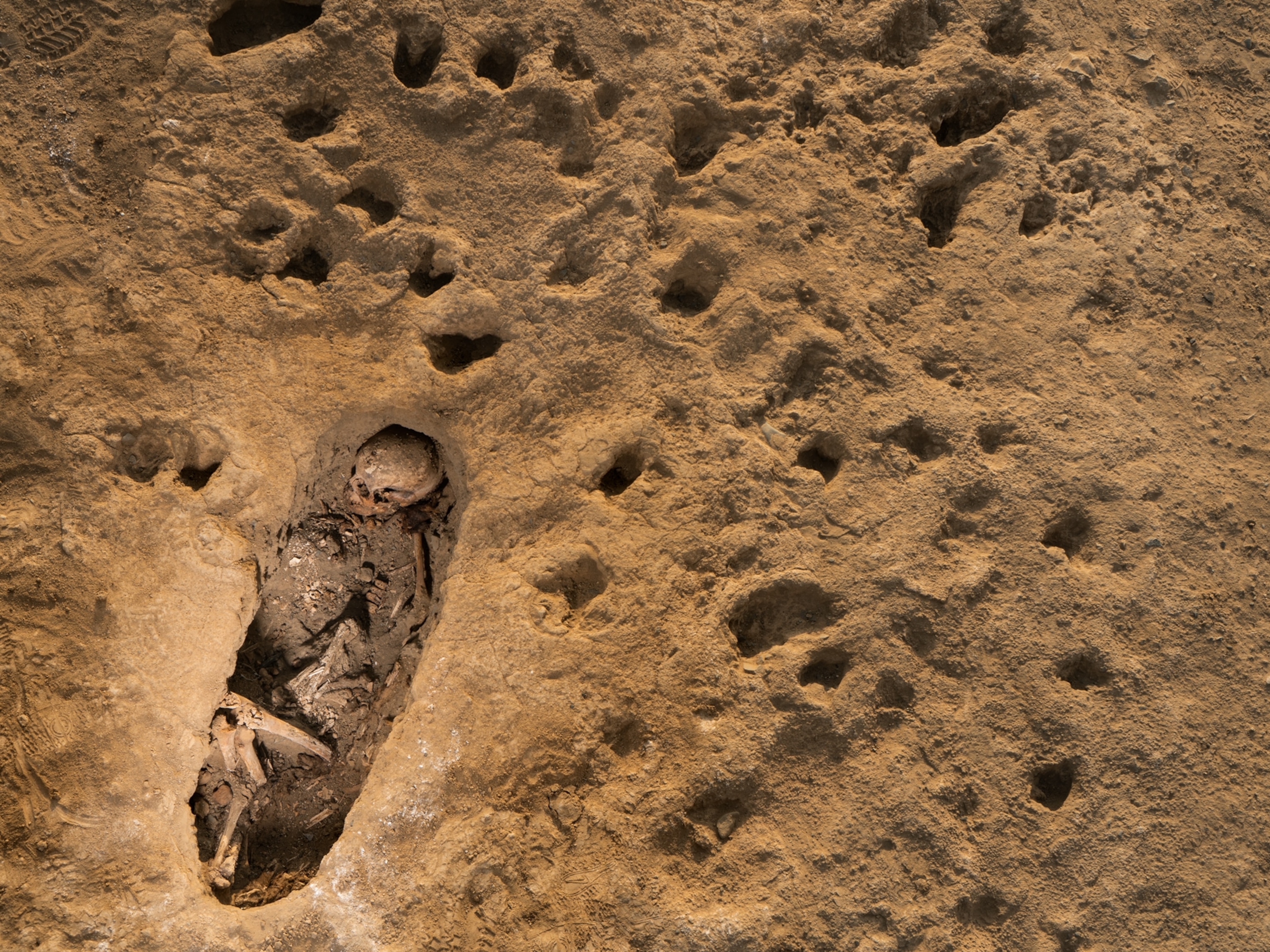Who is Krampus? Explaining the horrific Christmas beast
The mythical Krampus is meant to whip children into being nice.
When listening to the radio in December, it's unlikely to hear holiday songs singing the praises of Krampus: a half-goat, half-demon, horrific beast who literally beats people into being nice and not naughty.
Krampus isn't exactly the stuff of dreams: Bearing horns, dark hair, fangs, and a long tongue, the anti-St. Nicholas comes with a chain and bells that he lashes about, along with a bundle of birch sticks meant to swat naughty children. He then hauls the bad kids down to the underworld.
You better watch out . . .
In Catholicism, St. Nicholas is the patron saint of children. His saints day falls in early December, which helped strengthen his association with the Yuletide season. Many European cultures not only welcomed the kindly man as a figure of generosity and benevolence to reward the good, but they also feared his menacing counterparts who punished the bad. Parts of Germany and Austria dread the beastly Krampus, while other Germanic regions have Belsnickle and Knecht Ruprecht, black-bearded men who carry switches to beat children. France has Hans Trapp and Père Fouettard. (Some of these helpers, such as Zwarte Piet in The Netherlands have attracted recent controversy.)
Krampus's name is derived from the German word krampen, meaning claw, and is said to be the son of Hel in Norse mythology. The legendary beast also shares characteristics with other scary, demonic creatures in Greek mythology, including satyrs and fauns.
The legend is part of a centuries-old Christmas tradition in Germany, where Christmas celebrations begin in early December. Krampus was created as a counterpart to kindly St. Nicholas, who rewarded children with sweets. Krampus, in contrast, would swat "wicked" children, stuff them in a sack, and take them away to his lair.
According to folklore, Krampus purportedly shows up in towns the night of December 5, known as Krampusnacht, or Krampus Night. The next day, December 6, is Nikolaustag, or St. Nicholas Day, when children look outside their door to see if the shoe or boot they'd left out the night before contains either presents (a reward for good behavior) or a rod (bad behavior). (For more on the history of St. Nicholas, see From St. Nicholas to Santa Claus.)
A more modern take on the tradition in Austria, Germany, Hungary, Slovenia, and the Czech Republic involves drunken men dressed as devils, who take over the streets for a Krampuslauf—a Krampus Run of sorts, when people are chased through the streets by the "devils."

Why scare children with a demonic, pagan monster? Maybe it's a way for humans to get in touch with their animalistic side. Such impulses may be about assuming "a dual personality," according to António Carneiro, who spoke to National Geographic magazine about revitalized pagan traditions. The person dressed as the beast "becomes mysterious," he said.
Krampus is coming to town
Krampus's frightening presence was suppressed for many years—the Catholic Church forbade the raucous celebrations, and fascists in World War II Europe found Krampus despicable because it was considered a creation of the Social Democrats.
But Krampus has been having a resurgance over the past few years, thanks partly to a "bah, humbug" attitude in pop culture, with people searching for ways to celebrate the yuletide season in non-traditional ways. In the United States, people are embracing the dark side of Christmas with Krampus movies, special "Krampus" television episodes. They're throwing Krampus parties, attending local Krampusnachts (in cities like Washington, D.C. and New Orleans), and running in Krampus-themed races. (Read "How Krampus, the Christmas ‘Devil,’ Became Cool.")
For its part, Austria is attempting to commercialize the harsh persona of Krampus by selling chocolates, figurines, and collectible horns. There are already complaints that Krampus is becoming too commercialized and losing his edge because of his newfound popularity.
You May Also Like
Go Further
Animals
- Octopuses have a lot of secrets. Can you guess 8 of them?
- Animals
- Feature
Octopuses have a lot of secrets. Can you guess 8 of them? - This biologist and her rescue dog help protect bears in the AndesThis biologist and her rescue dog help protect bears in the Andes
- An octopus invited this writer into her tank—and her secret worldAn octopus invited this writer into her tank—and her secret world
- Peace-loving bonobos are more aggressive than we thoughtPeace-loving bonobos are more aggressive than we thought
Environment
- This ancient society tried to stop El Niño—with child sacrificeThis ancient society tried to stop El Niño—with child sacrifice
- U.S. plans to clean its drinking water. What does that mean?U.S. plans to clean its drinking water. What does that mean?
- Food systems: supporting the triangle of food security, Video Story
- Paid Content
Food systems: supporting the triangle of food security - Will we ever solve the mystery of the Mima mounds?Will we ever solve the mystery of the Mima mounds?
- Are synthetic diamonds really better for the planet?Are synthetic diamonds really better for the planet?
- This year's cherry blossom peak bloom was a warning signThis year's cherry blossom peak bloom was a warning sign
History & Culture
- Strange clues in a Maya temple reveal a fiery political dramaStrange clues in a Maya temple reveal a fiery political drama
- How technology is revealing secrets in these ancient scrollsHow technology is revealing secrets in these ancient scrolls
- Pilgrimages aren’t just spiritual anymore. They’re a workout.Pilgrimages aren’t just spiritual anymore. They’re a workout.
- This ancient society tried to stop El Niño—with child sacrificeThis ancient society tried to stop El Niño—with child sacrifice
- This ancient cure was just revived in a lab. Does it work?This ancient cure was just revived in a lab. Does it work?
- See how ancient Indigenous artists left their markSee how ancient Indigenous artists left their mark
Science
- Jupiter’s volcanic moon Io has been erupting for billions of yearsJupiter’s volcanic moon Io has been erupting for billions of years
- This 80-foot-long sea monster was the killer whale of its timeThis 80-foot-long sea monster was the killer whale of its time
- Every 80 years, this star appears in the sky—and it’s almost timeEvery 80 years, this star appears in the sky—and it’s almost time
- How do you create your own ‘Blue Zone’? Here are 6 tipsHow do you create your own ‘Blue Zone’? Here are 6 tips
- Why outdoor adventure is important for women as they ageWhy outdoor adventure is important for women as they age
Travel
- This royal city lies in the shadow of Kuala LumpurThis royal city lies in the shadow of Kuala Lumpur
- This author tells the story of crypto-trading Mongolian nomadsThis author tells the story of crypto-trading Mongolian nomads
- Slow-roasted meats and fluffy dumplings in the Czech capitalSlow-roasted meats and fluffy dumplings in the Czech capital




